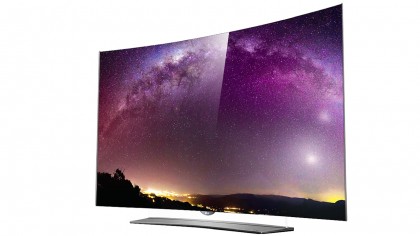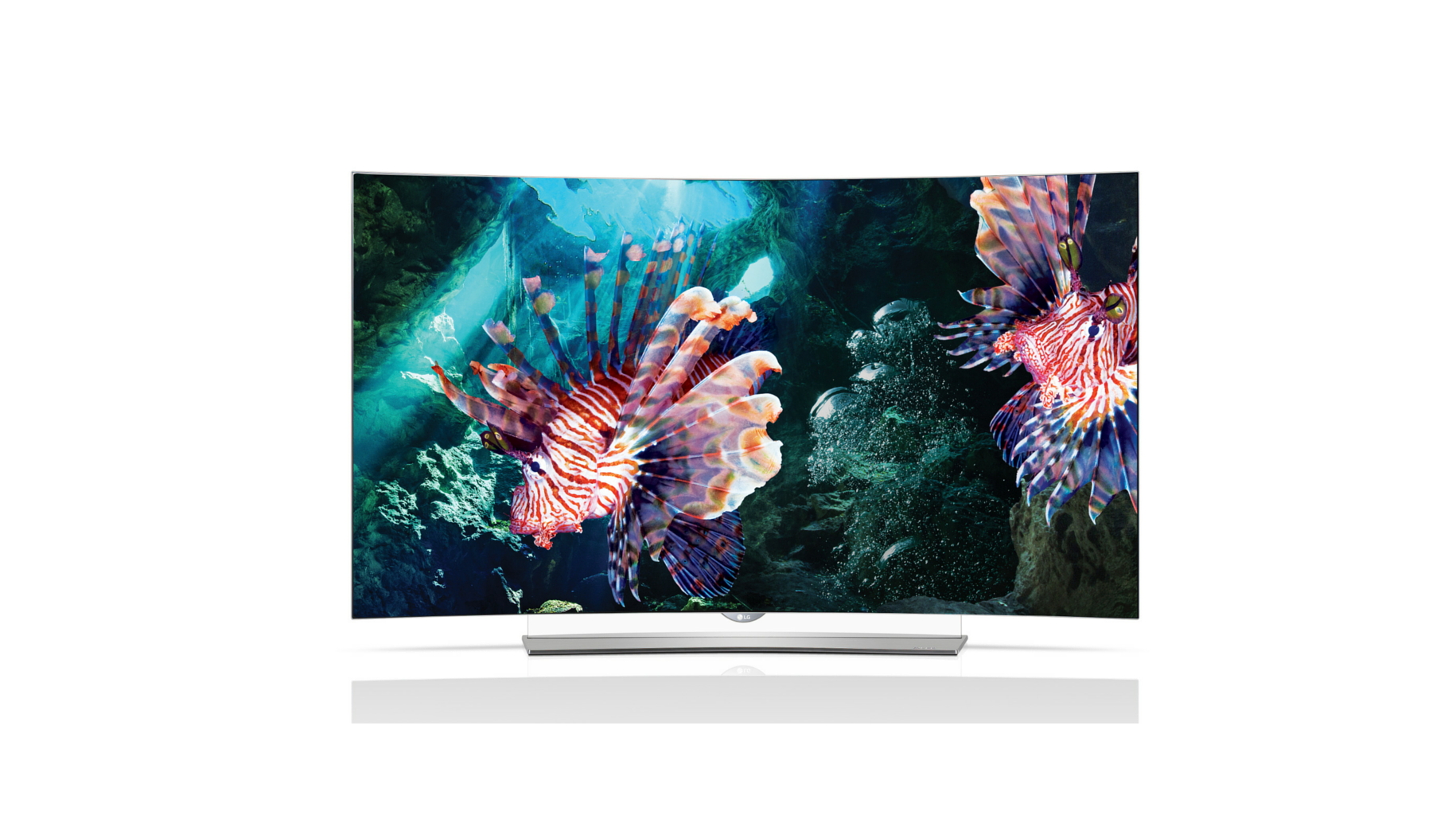Why you can trust TechRadar
The 55EG960V doesn't come in a non-curved model, which is a bit of a shame since the curve does nothing for me design-wise, though the addition of a filter works well meaning there are no annoying reflections.
In fact, all there is is glorious, consistently brilliant images from almost all sources. Truly, LED TVs suck in comparison to the 55EG960V.
The 55EG960V's images are so quick, so fluid, so sharp and so forgiving, though that was with LG's TruMotion circuitry engaged on its mid-strength 'clear' setting. While most 4K TVs show fine detailing in native Ultra HD sources but make standard-def TV channels, video files and DVDs look simply awful, the 55EG960V does no such thing.
I watched a 1280x688 MP4 video file on the 55EG960V – a 0.8 megapixel image displayed on a eight megapixel screen – but every single one of those 3840 x 2160 pixels were filled. Despite being 10 times lower-resolution than the 55EG960V was designed to show, it looked stunning; fluid, boldy colourful, surprisingly detailed and so, so clean.
Go lower down the video food-chain and things to become rather ragged – and more so than on a 50-inch reference plasma nearby – so it's too much to say that 4K OLED is perfect.
However, it's hard to think anything other that when you watch the 55EG960V in a blackout.
Suddenly there was a fade-to-black moment mid-way through Gravity; the room didn't just darken, it disappeared as every single one pixel switched-off and left no residual trace of any light. This is where I started to be truly impressed; how can a TV go completely dead, and for such a brief moment? What's more, when a bright, white object is shown in the centre of the screen, the background is so black that it appears to stretch far beyond the edges of the screen itself; the entire room becomes the backdrop.
Close those curtains; summer is cancelled.

On the 55EG960V, light is produced by passing electricity through a thin layer of carbon-based organic dyes at a pixel level, not at a backlight level as with LED. LG also has its own take on OLED tech, producing a white pixel as well as the usual red, green and blue.
Occasionally there's a touch of glare when the credits roll, but it's not serious.
Gravity on 2D Blu-ray puts those insane black levels to good use, providing a completely convincing and involving night sky dotted with white, bright stars. I've not seen anything like this before.
Turn to the 3D version of Gravity and the 55EG960V's passive/Cinema 3D system Offers a surprisingly detailed pictures that don't suffer from any flicker or dips in brightness. Because of how passive 3D works, what we're seeing is half of the set's 4K resolution in each eye, which equates to two (albeit upscaled) Full HD images spliced together.
We always knew that LG's passive 3D system worked the course when viewed on for cable TV, but we didn't expect it to look this good. Want to see 4K 3D? Well, you'll have to wait for the arrival of 8K screens for that treat.
For now, the 55EG960V is treat enough; the best 3D TV around is also the best 4K screen.
Current page: Picture quality
Prev Page Introduction and features Next Page Usability, sound quality and valueJamie is a freelance tech, travel and space journalist based in the UK. He’s been writing regularly for Techradar since it was launched in 2008 and also writes regularly for Forbes, The Telegraph, the South China Morning Post, Sky & Telescope and the Sky At Night magazine as well as other Future titles T3, Digital Camera World, All About Space and Space.com. He also edits two of his own websites, TravGear.com and WhenIsTheNextEclipse.com that reflect his obsession with travel gear and solar eclipse travel. He is the author of A Stargazing Program For Beginners (Springer, 2015),

